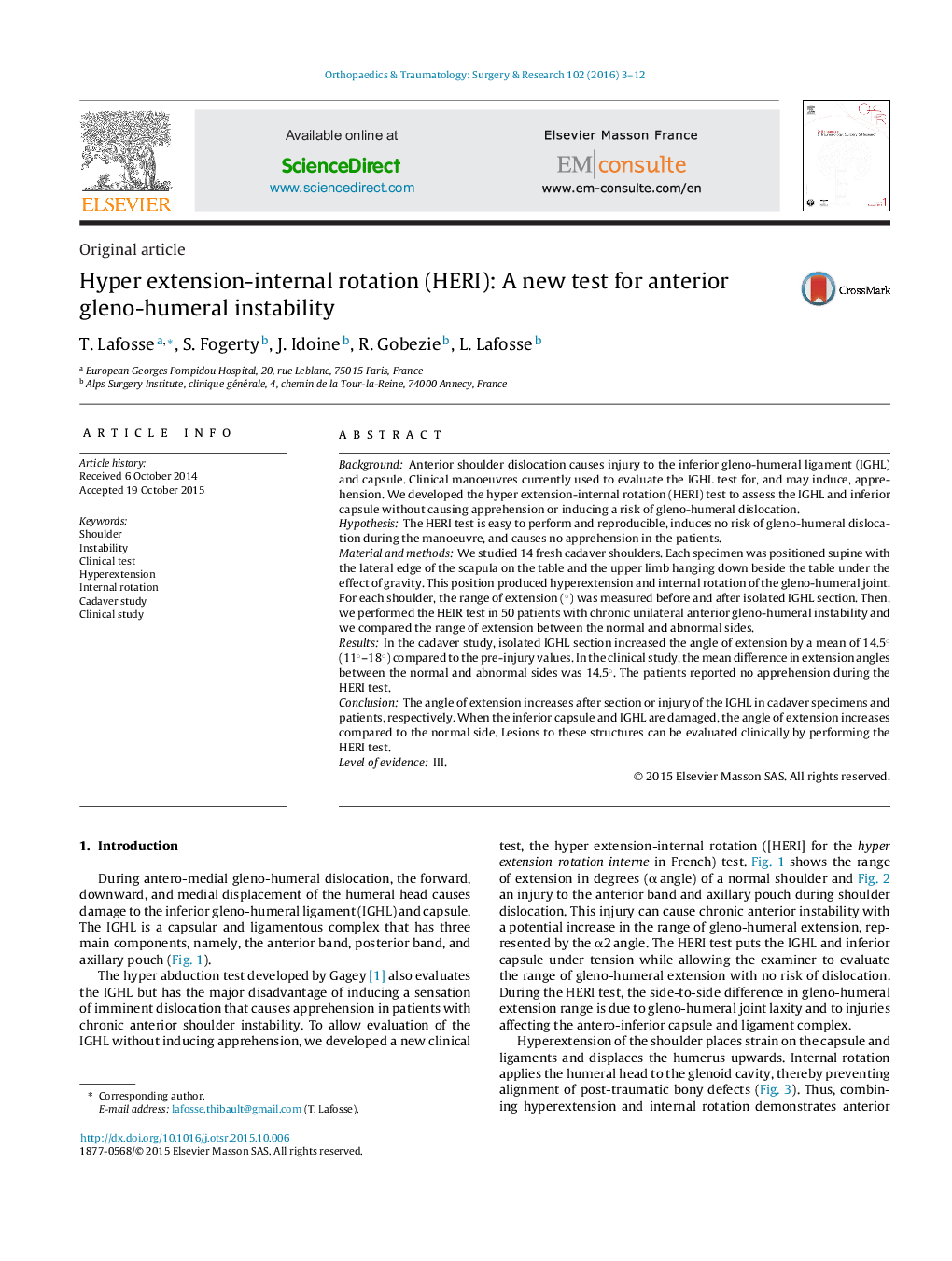| Article ID | Journal | Published Year | Pages | File Type |
|---|---|---|---|---|
| 4080937 | Orthopaedics & Traumatology: Surgery & Research | 2016 | 10 Pages |
BackgroundAnterior shoulder dislocation causes injury to the inferior gleno-humeral ligament (IGHL) and capsule. Clinical manoeuvres currently used to evaluate the IGHL test for, and may induce, apprehension. We developed the hyper extension-internal rotation (HERI) test to assess the IGHL and inferior capsule without causing apprehension or inducing a risk of gleno-humeral dislocation.HypothesisThe HERI test is easy to perform and reproducible, induces no risk of gleno-humeral dislocation during the manoeuvre, and causes no apprehension in the patients.Material and methodsWe studied 14 fresh cadaver shoulders. Each specimen was positioned supine with the lateral edge of the scapula on the table and the upper limb hanging down beside the table under the effect of gravity. This position produced hyperextension and internal rotation of the gleno-humeral joint. For each shoulder, the range of extension (°) was measured before and after isolated IGHL section. Then, we performed the HEIR test in 50 patients with chronic unilateral anterior gleno-humeral instability and we compared the range of extension between the normal and abnormal sides.ResultsIn the cadaver study, isolated IGHL section increased the angle of extension by a mean of 14.5° (11°–18°) compared to the pre-injury values. In the clinical study, the mean difference in extension angles between the normal and abnormal sides was 14.5°. The patients reported no apprehension during the HERI test.ConclusionThe angle of extension increases after section or injury of the IGHL in cadaver specimens and patients, respectively. When the inferior capsule and IGHL are damaged, the angle of extension increases compared to the normal side. Lesions to these structures can be evaluated clinically by performing the HERI test.Level of evidenceIII.
